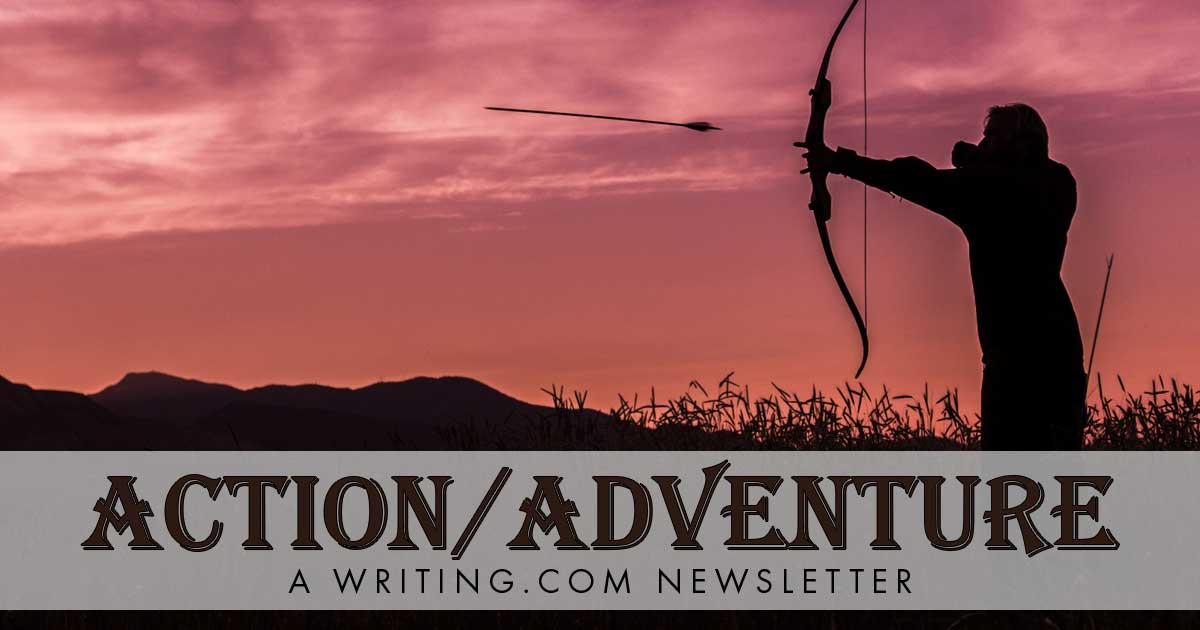This week: DNA Evidence Edited by: Annette  
More Newsletters By This Editor 
![Table of Contents [#401437]
Table of Contents](https://www.Writing.Com/main/trans.gif) ![Table of Contents [#401437]
Table of Contents Table of Contents](/main/images/action/display/ver/1709303267/item_id/401437.png)
1. About this Newsletter
2. A Word from our Sponsor
3. Letter from the Editor
4. Editor's Picks
5. A Word from Writing.Com
6. Ask & Answer
7. Removal instructions
![About This Newsletter [#401439]
About This Newsletter](https://www.Writing.Com/main/trans.gif) ![About This Newsletter [#401439]
About This Newsletter About This Newsletter](https://www.writing.com/main/images/action/display/ver/1709303676/item_id/401439.png)
“We geneticists may be the barbarians coming late to the study of the human past, but it is always a bad idea to ignore barbarians.”
“Seventy thousand years ago, the world was populated by very diverse human forms, and we have genomes from an increasing number of them, allowing us to peer back to a time when humanity was much more variable than it is today.”
Both quotes by: David Reich, Who We Are and How We Got Here: Ancient DNA and the new science of the human past |
![Letter from the editor [#401442]
Letter from the editor](https://www.Writing.Com/main/trans.gif) ![Letter from the editor [#401442]
Letter from the editor Letter from the editor](https://www.writing.com/main/images/action/display/ver/1709303784/item_id/401442.png)
DNA Evidence
Science is progressing a warp speed into the past. Deoxyribonucleic acid, DNA for short, is the wondrous substance that carries genetic instructions for the development, functioning, growth and reproduction of all known organisms and many viruses. That means: us.
Not too long ago, DNA had to be collected somewhat fresh to be studied. Now, scientists have achieved to link humans to each other from dusty bone fragments that have been in the ground for thousands of years. If there isn't an action/adventure story - or hundreds of stories - in all of that new information!
Archeologists in France have unearthed two Neolithic family groups that spanned several generations. The funerary site is 6,700 years old. Some would say, older than Earth. But that's a different story in another action/adventure book.
When were people Neolithic? They started about 12,000 years ago in the parts close to the Mediterranean Sea of West Asia, Southeastern Europe, and North Africa. Their big lifestyle change was to shift from hunting and gathering to develop farming. Rather than follow the migrations of prey animals, humans now had an incentive to create lasting communities in one area and not leave from there.
The scientist discovered that the people in the huge grave site were from two families. The DNA of 94 individuals showed that the overall group descended from the same man. A founding father, so to speak. The family lineage traveled along a patrilineal pattern. This means that the boys grew into men who stayed with the group while the girls grew up into women and left the group before having children.
The buried women in the family plot had come from somewhere else. Not only that, but in the group of 94 individuals, there were no half siblings and no signs of inbreeding. The tradition of one sex entirely leaving the group prevented that. Additionally, all individuals who were recognized as siblings had the same set of parents - meaning the families practiced monogamy.
Possibly the most exciting bit of information is that these Neolithic people, who did not create any type of grave markers that would have survived until the present, knew who was buried where as the close relatives were always buried next to each other.
There are so many stories here! Who came up with the idea to plant something rather than pick and eat it whole? How did they know that they had to avoid inbreeding? How far did the network of tribes go to ensure the daughters of the same tribal women didn't come back in the next generation and caused cousins marrying each other? These and many more questions lend themselves to action/adventure stories.
Writers, look to archeology for ideas. You never know whom you're going to meet.
Would you like to be able to trace your family's roots to Neolithic times? |
![Editor's Picks [#401445]
Editor's Picks](https://www.Writing.Com/main/trans.gif) ![Editor's Picks [#401445]
Editor's Picks Editor's Picks](https://www.writing.com/main/images/action/display/ver/1709303830/item_id/401445.png)
| |  | Invalid Item 
This item number is not valid.
#2290829 by Not Available. |
|
![Word From Writing.Com [#401447]
Word from Writing.Com](https://www.Writing.Com/main/trans.gif) ![Word From Writing.Com [#401447]
Word from Writing.Com Word from Writing.Com](https://www.writing.com/main/images/action/display/ver/1709303874/item_id/401447.png)
Have an opinion on what you've read here today? Then send the Editor feedback! Find an item that you think would be perfect for showcasing here? Submit it for consideration in the newsletter!
https://www.Writing.Com/go/nl_form
![Ask & Answer [#401448]
Ask & Answer](https://www.Writing.Com/main/trans.gif) ![Ask & Answer [#401448]
Ask & Answer Ask & Answer](https://www.writing.com/main/images/action/display/ver/1709303902/item_id/401448.png)
Replies to my last Action/Adventure newsletter "Put the Fight into Write"  that asked: Do you enjoy reading long fight scenes or do you prefer the short, punchy ones? that asked: Do you enjoy reading long fight scenes or do you prefer the short, punchy ones?
stevengepp wrote: Here in my home state, I ran a workshop on how to write fight scenes for those uncomfortable doing so, and who need help doing so. It went so well, I then did it twice more. Unfortunately, it is very visual (lots of video), lasts 3 hours, and so does not fit well in WdC. But if anyone wants some help, they can email me, I guess.
Wow. That's a great resource. I wonder if you put the videos up on YouTube, you could embed them into a page here and make the available to the community.
Monty  wrote: Not long ones but not too short. wrote: Not long ones but not too short.
That makes sense. |
![Unsubscribe [#401452]
Removal Instructions](https://www.Writing.Com/main/trans.gif) ![Unsubscribe [#401452]
Removal Instructions Removal Instructions](https://www.writing.com/main/images/action/display/ver/1709303960/item_id/401452.png)
To stop receiving this newsletter, click here for your newsletter subscription list. Simply uncheck the box next to any newsletter(s) you wish to cancel and then click to "Submit Changes". You can edit your subscriptions at any time.
|
